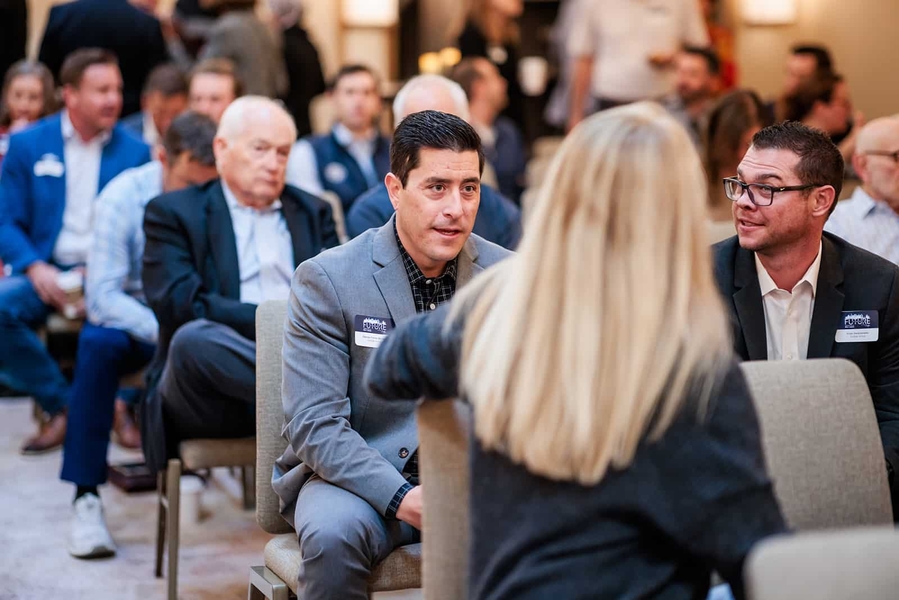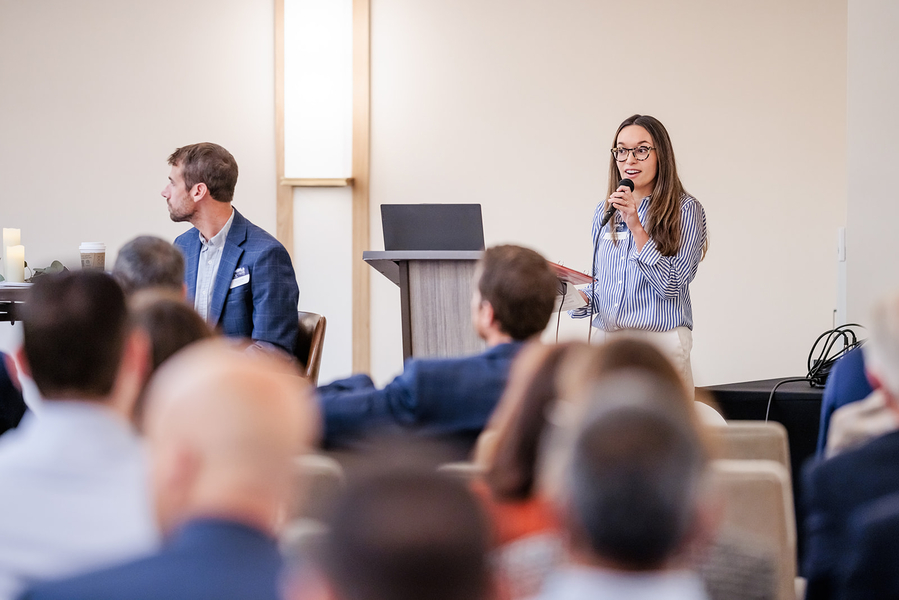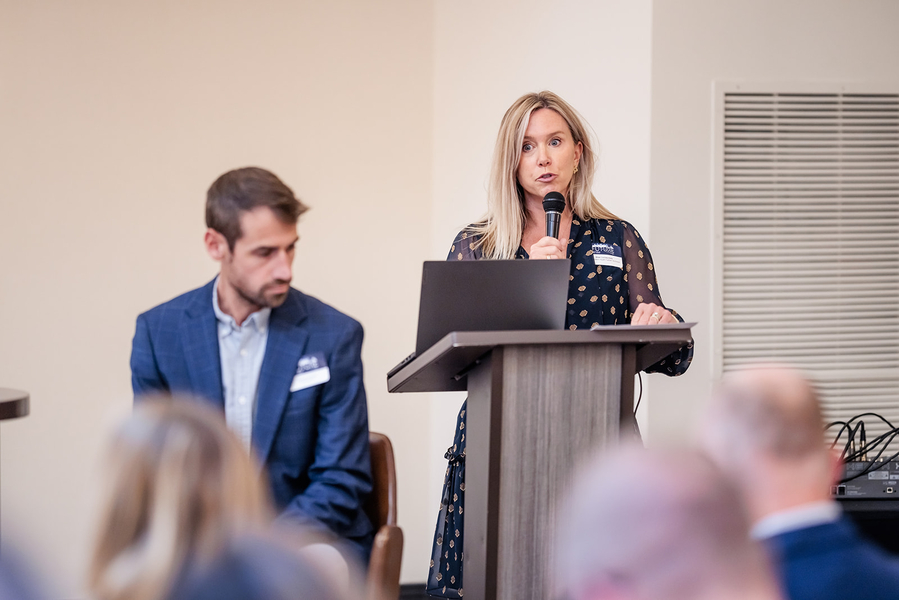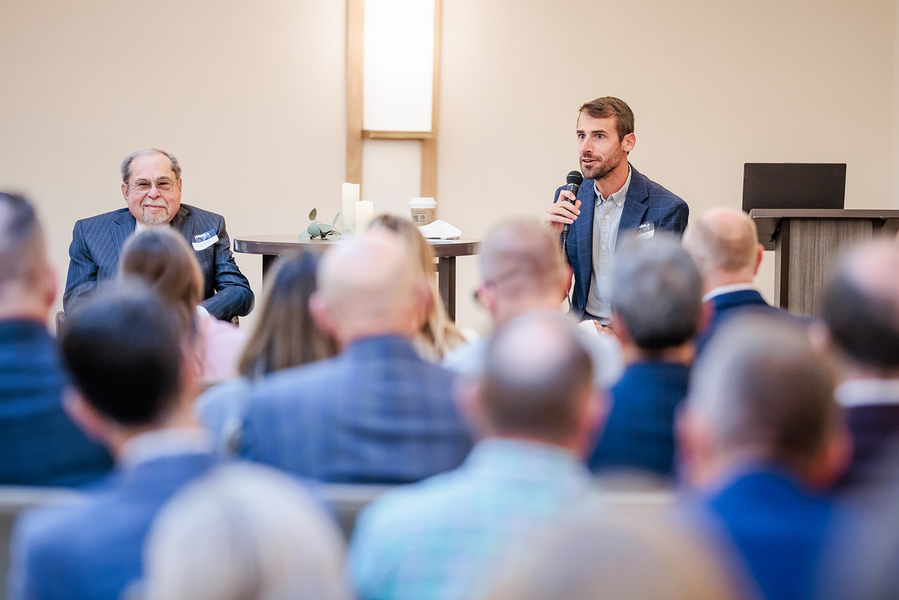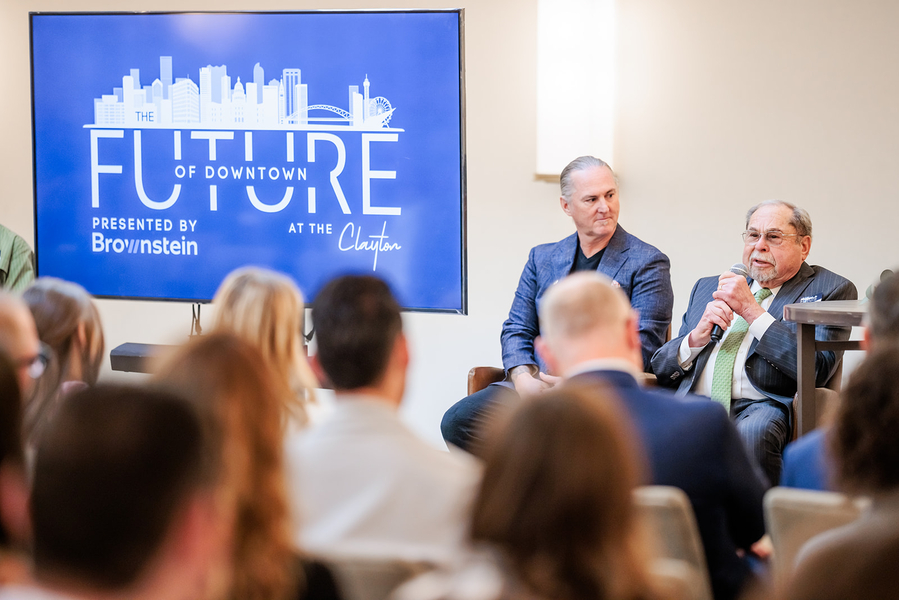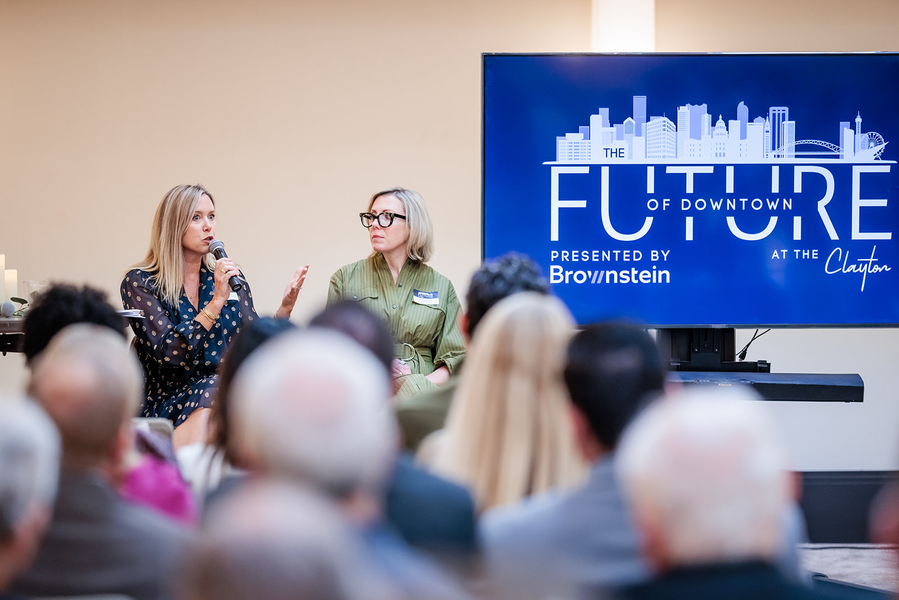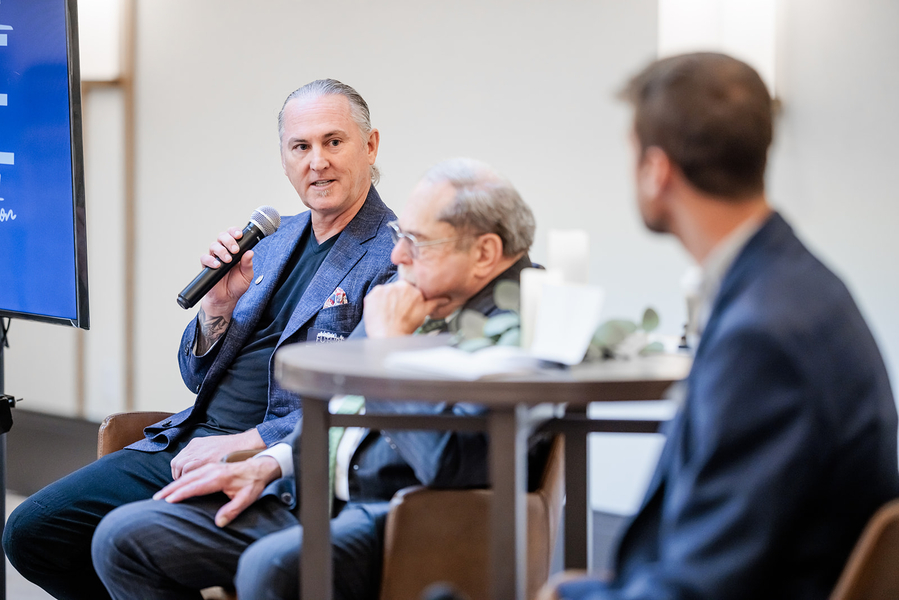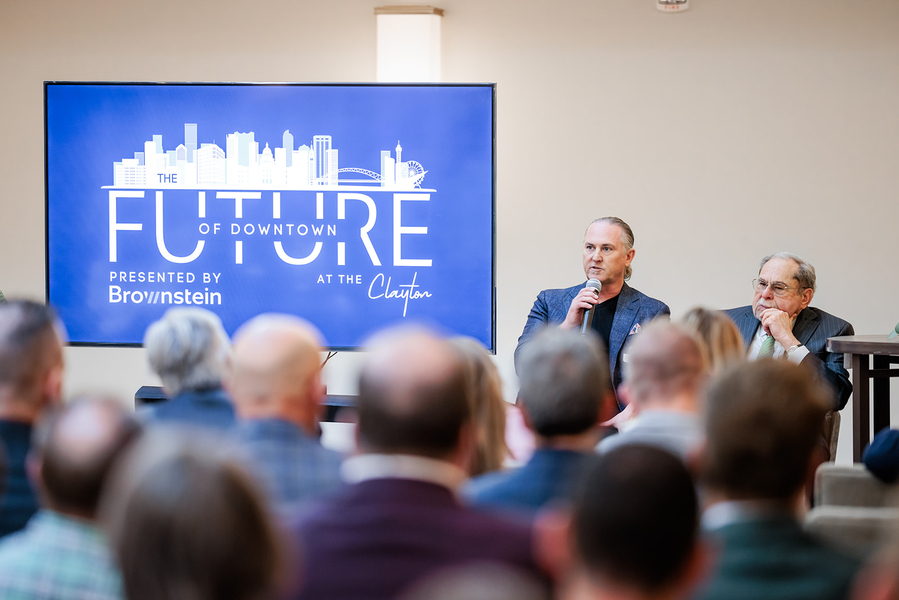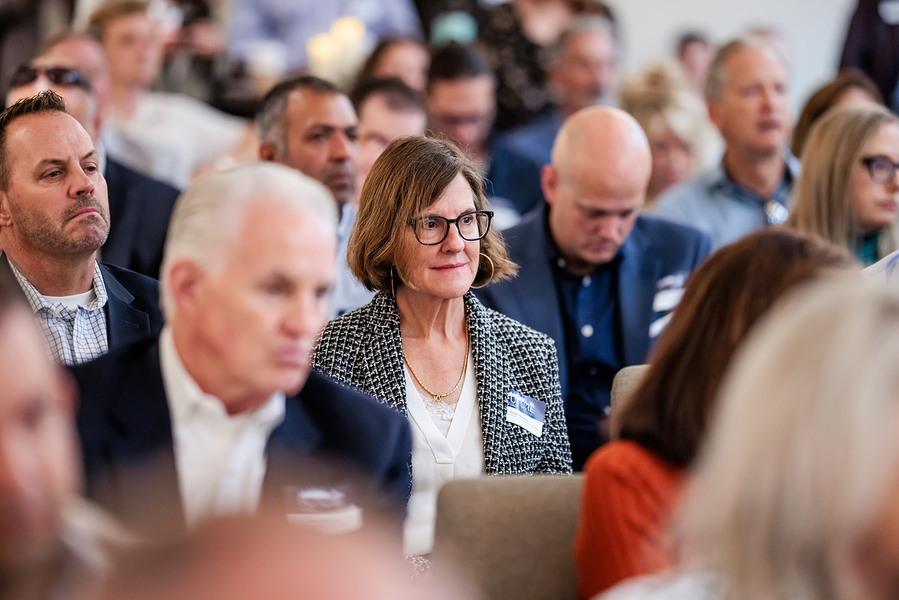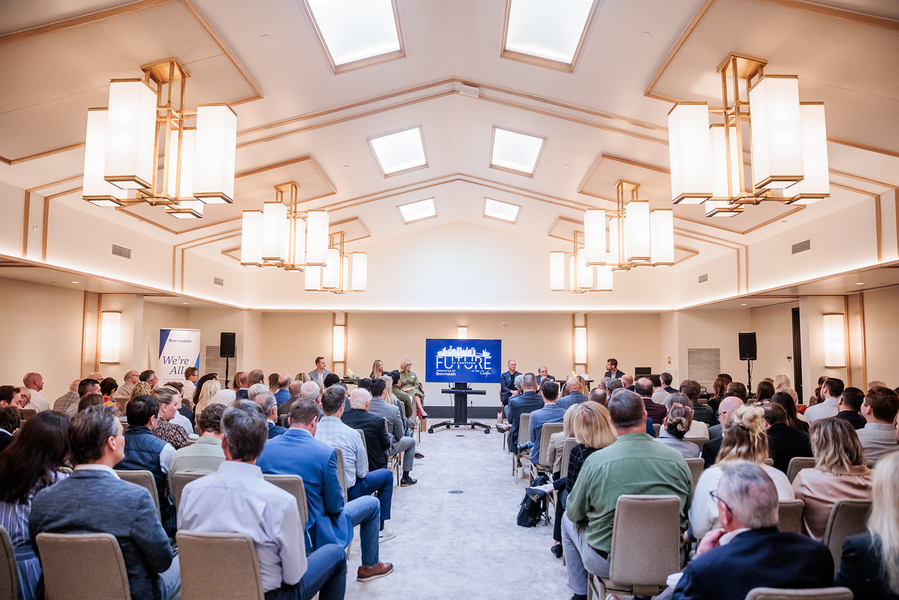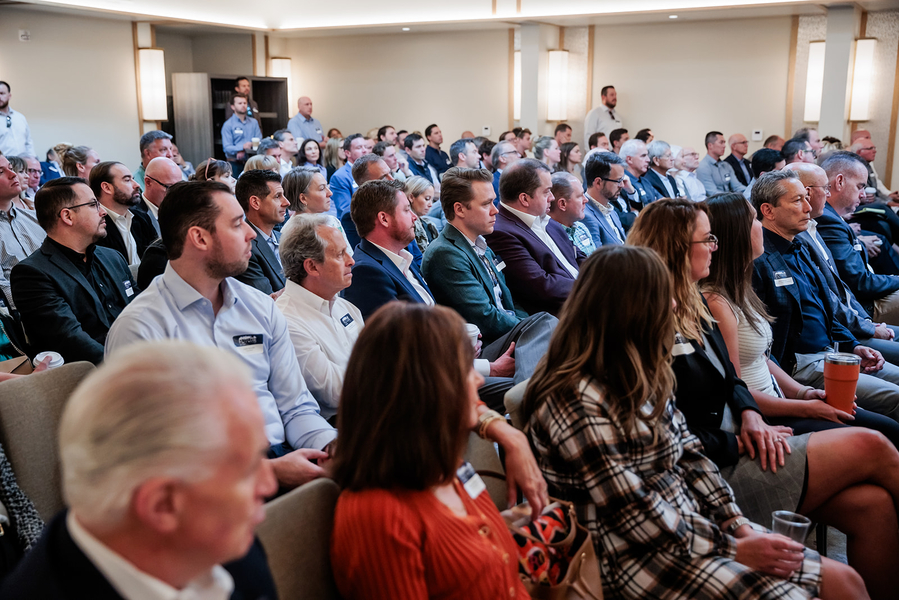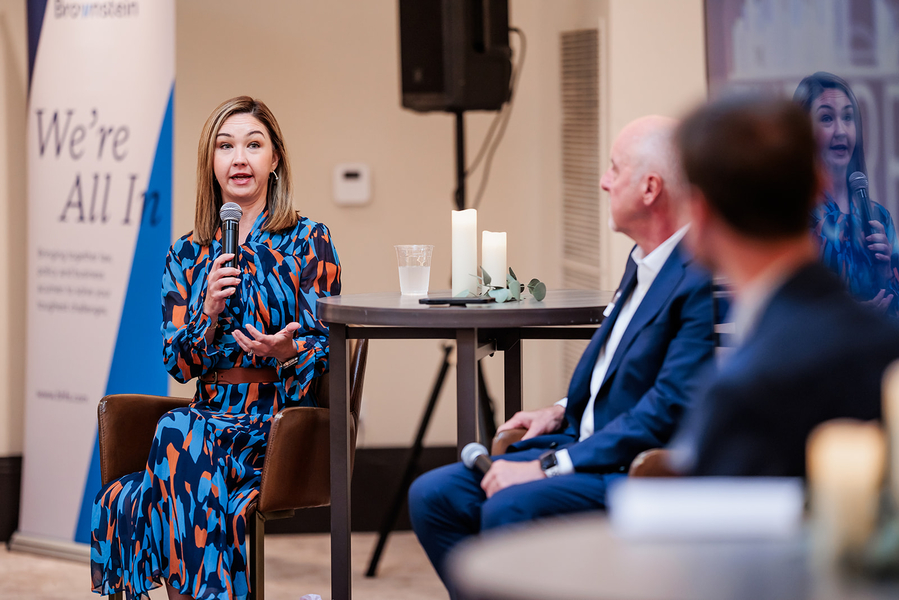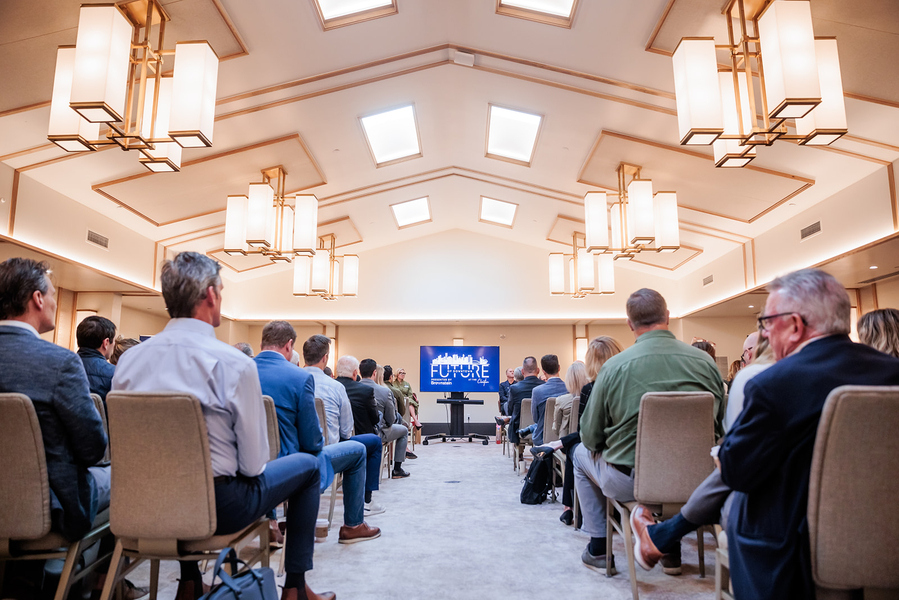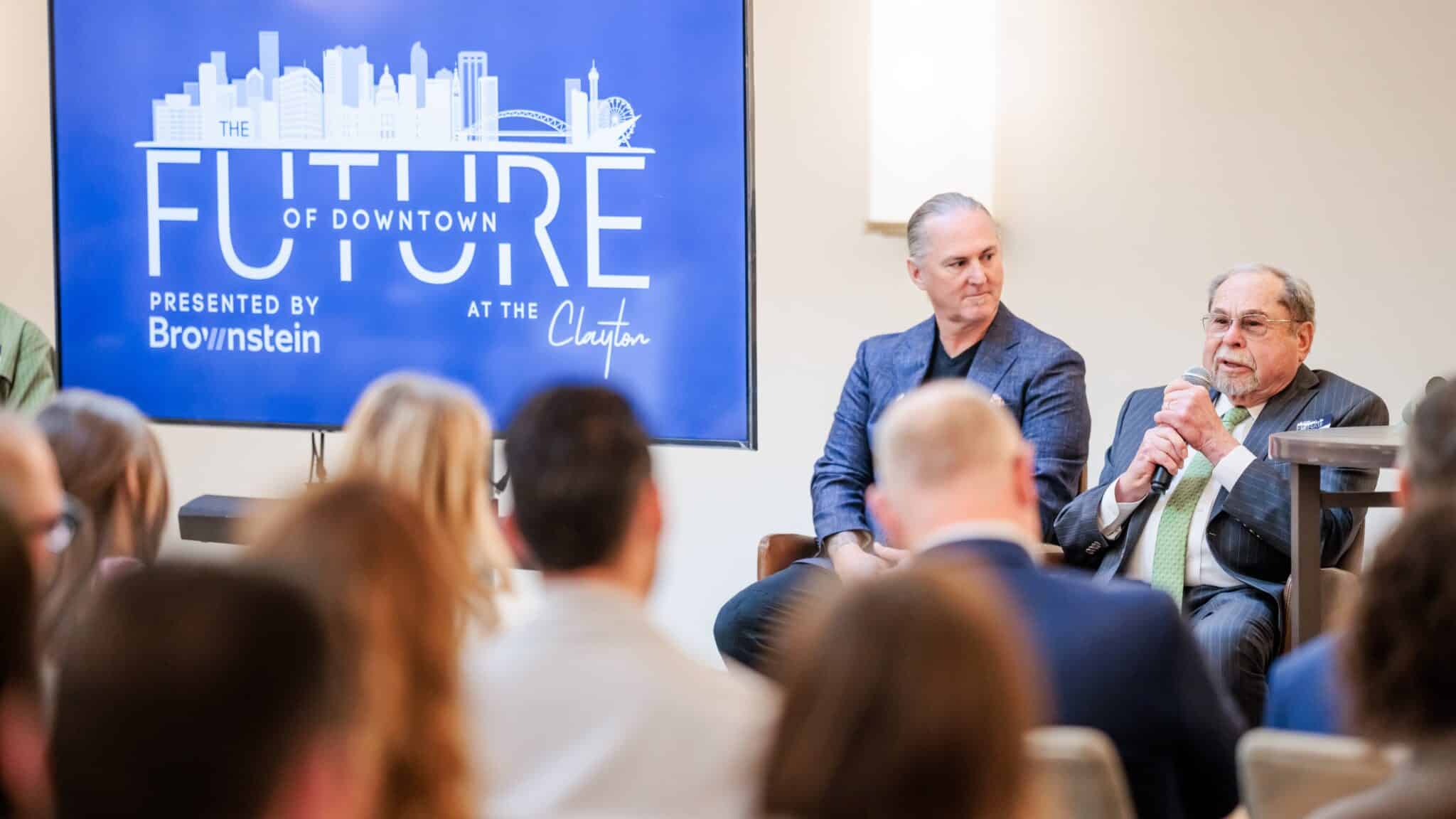
NAI Shames Makovsky co-founder Evan Makovsky, right, speaks at BusinessDen’s “The Future of Downtown” event on Sept. 12, 2023, as TAG Restaurant Group owner Troy Guard looks on. (Alyson McClaran/Special to BusinessDen)
Some of the older office buildings on the southern end of downtown Denver likely need to just be demolished, a longtime property owner and broker said last week.
Evan Makovsky, co-founder of NAI Shames Makovsky, made the comment at BusinessDen’s “The Future of Downtown” event, presented by Brownstein.
“There’s an old saying, you can’t make a race horse out of a mule,” Makovsky said. “These buildings, economically, they no longer compete with the newer buildings that were built in all of the other areas that we’re talking about … My opinion is that a good majority of those buildings have to come down. And we have to wipe the slate clean and we have to build for the next 100 years, not the last 100 years.”
Upper Downtown, as the Central Business District is sometimes called, features some of the city’s most prominent office towers, such as Republic Plaza and the Wells Fargo Center. But its buildings are seeing higher vacancy rates than spots closer to Union Station, and a handful are currently in foreclosure or overseen by a receiver.
The pandemic has prompted what many in the real estate industry call a “flight to quality,” the maxim that companies that do want office space will opt to go for the very best available.
“If you take a look at the buildings downtown, save except Republic Plaza and a couple governmental buildings, you’re talking about buildings that are roughly 50 years old and older,” Makovsky said.
Some think Upper Downtown’s buildings could be converted to residential use. A city-funded study released last month highlighted buildings that could be suitable. Kourtny Garrett, CEO of the Downtown Denver Partnership who previously worked for Downtown Dallas Inc., said she’s “probably more bullish” on the concept than most in Denver “because I’m coming from a city who’s been doing this hand over fist.”
“Is it challenging? Yes. Does it make financial sense? Not usually. Can they still be beautiful properties? Absolutely,” Garrett said. “And I really challenge you – Dallas, Chicago, Calgary, Houston – there are some really really incredible models with some vision and how to layer your financing, it can be done.”
Still, Blair Lichtenfels, a real estate attorney with Brownstein, warned event attendees that residential conversion “is not a panacea.”
“It’s used as a talking point. And I tend to believe there are going to be a lot of challenges, even with the 16 buildings that were identified with the city,” Lichtenfels said. “To me I’m hopeful that the city uses that as one component of an overall plea for public investment.”
“I think the city needs to explore financial incentives for private-sector investors who are looking to invest in the Upper Downtown area, whether that’s office-to-residential conversion, tearing buildings down, building new product, etc.,” she said. “They need to be able to secure sources of funding to be able to challenge the capital market that’s going to make this reinvestment even harder to accomplish.”
Makovsky, whose downtown real estate holdings include a stake in the land beneath the new Block 162 office tower, told attendees that “downtown is really the heart of this entire body that goes on in this Denver metro area.
“And if we are having a heart problem, if we don’t do something about it collectively, we’re all going to die off.”
Other panelists at “The Future of Downtown” were Troy Guard of TAG Restaurant Group, Kenneth Monfort of Monfort Cos., Amanda Parsons of Thompson Denver and Richard Scharf of Visit Denver. Other sponsors were Alpine Bank, Fulenwider and True North Cos.
